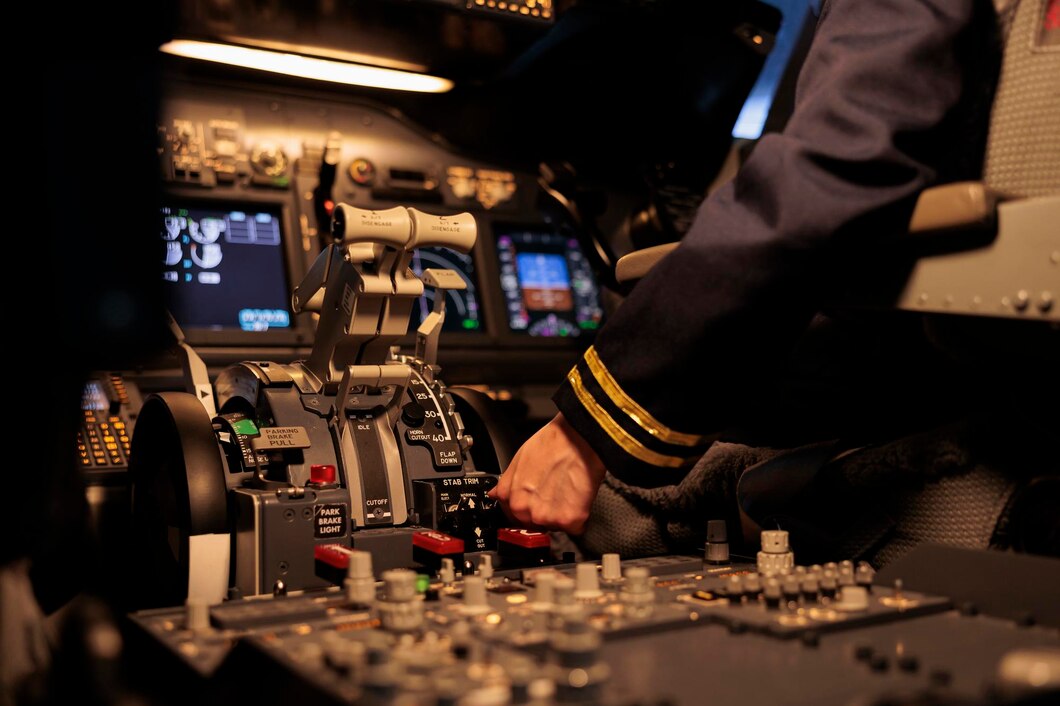Introduction: First Impressions in Aviation
In the competitive world of international aviation, first impressions matter profoundly. For Saudi Arabia's rapidly expanding airports, ground staff uniforms represent one of the most visible and influential expressions of brand identity, creating lasting impressions on the millions of passengers who travel through the Kingdom's aviation hubs annually.
Recent passenger experience research indicates that visual cues, particularly staff appearance, significantly influence travelers' perceptions of an airport's efficiency, professionalism, and service quality. A comprehensive study conducted by the International Airport Service Quality Association in early 2025 found that 72% of international travelers form their initial impression of an airport within the first seven minutes of arrival, with staff appearance ranking as one of the top three factors influencing these perceptions.
As Saudi Arabia continues its ambitious transformation of the aviation sector under Vision 2030 initiatives, airport authorities and aviation companies are increasingly recognizing ground staff uniforms as strategic assets rather than mere operational necessities. This shift in perspective has prompted a sophisticated rethinking of uniform design, development, and implementation across Saudi's major international airports.

Modern ground staff uniforms at King Khalid International Airport showcase the distinctive Saudi aviation visual identity
The Multifaceted Role of Ground Staff Uniforms
Ground staff uniforms at Saudi airports serve several crucial functions beyond simply identifying employees. Understanding these multifaceted roles helps explain why leading Saudi aviation authorities invest significant resources in their development:
Visual Brand Ambassadors
Ground staff essentially function as walking embodiments of the airport's brand. Their uniforms communicate core brand attributes through:
- Color systems that instantly connect staff to the broader airport or airline brand
- Design elements that convey specific brand attributes (precision, hospitality, innovation)
- Quality standards that reflect the overall service promise
- Distinctive styling that differentiates Saudi airports from international competitors
King Abdulaziz International Airport in Jeddah, for example, implemented a comprehensive ground staff uniform system in 2025 that strategically incorporates the airport's signature teal and gold palette across all staff categories while varying design elements to signal different service functions.
Functional Work Attire
Beyond brand representation, ground staff uniforms must function effectively as work garments in demanding airport environments:
- Environmental adaptability for staff working between Saudi Arabia's intense outdoor climate and climate-controlled interiors
- Durability requirements for physically demanding roles like baggage handling and ramp operations
- Comfort considerations for staff working extended shifts in high-activity environments
- Safety compliance with aviation industry regulations and standards
The integration of these functional requirements with brand aesthetics represents one of the most challenging aspects of effective uniform design for Saudi airports.
Cultural Signifiers
In Saudi Arabia's international airports, ground staff uniforms also serve as cultural ambassadors, communicating aspects of Saudi identity to global travelers:
- Traditional influences thoughtfully incorporated into contemporary designs
- Color significance drawn from Saudi cultural heritage
- Pattern elements inspired by traditional Saudi geometric designs
- Cultural sensitivity in design options that respect diverse staff preferences
These cultural elements help create a distinctively Saudi airport experience that differentiates the Kingdom's aviation facilities in the competitive Gulf region.
Strategic Alignment with Brand Identity
The most successful ground staff uniform programs implemented at Saudi airports in 2025 demonstrate strategic alignment between uniform design and broader brand identity systems. This alignment manifests in several key dimensions:
Visual System Integration
Effective uniform programs function as extensions of the airport's comprehensive visual identity:
- Color consistency with precision matching between uniform elements and other brand applications
- Typography connections through badge designs and identification elements that utilize brand fonts
- Pattern systems that correspond to architectural and environmental design features
- Accessory coordination with branded elements appearing across the passenger journey
This visual integration creates a sense of coherence across all touchpoints, strengthening brand recognition and recall. Riyadh's King Khalid International Airport has established particularly strong visual consistency between its ground staff uniforms, architectural elements, and digital interfaces, creating a seamless visual experience for travelers.
Brand Attribute Expression
Beyond visual consistency, uniform design can express specific brand attributes that Saudi airports wish to emphasize:
- Precision and efficiency communicated through clean lines and structured tailoring
- Hospitality and warmth expressed through approachable styling and culturally significant elements
- Modernity and innovation conveyed through contemporary silhouettes and technical fabrics
- Prestige and quality signaled through premium materials and refined details
These design choices reinforce the airport's desired perception among travelers. For international hubs like King Abdulaziz International, which positions itself as a sophisticated gateway between East and West, ground staff uniforms emphasize cosmopolitan elegance while incorporating subtle Saudi design influences.
Service Philosophy Alignment
The most sophisticated uniform programs reflect the specific service philosophy of each Saudi airport:
- Approachability signals in customer-centric service environments
- Efficiency indicators for airports emphasizing streamlined processes
- Luxury cues for premium service positioning
- Cultural hospitality elements reflecting traditional Saudi values
This alignment ensures that visual presentation reinforces service delivery, creating a coherent passenger experience where what travelers see aligns with how they are treated.
Role-Specific Differentiation Within Unified Systems
One of the most significant advancements in Saudi airport uniform design has been the development of sophisticated systems that maintain visual cohesion while clearly differentiating staff roles—helping passengers quickly identify appropriate personnel for their needs.
Customer-Facing Service Personnel
Staff with significant passenger interaction typically wear uniforms featuring:
- Formal, polished presentation that conveys professionalism and competence
- Highly visible brand elements that reinforce the airport identity
- Approachable design details that encourage passenger engagement
- Comfort features that maintain presentability during extended customer interaction
These designs prioritize passenger trust-building while maintaining practical functionality for staff who spend long periods standing, walking, and interacting with travelers.
Operational and Technical Staff
For ground handlers, ramp agents, and other operational personnel:
- Enhanced durability features for physically demanding work conditions
- Safety compliance elements including high-visibility components when required
- Functional storage solutions for essential tools and equipment
- Weather-appropriate options for Saudi Arabia's challenging climate
These designs maintain brand connection through color and key visual elements while prioritizing the practical requirements of operational roles.
Supervisory and Management Personnel
Leadership staff typically wear uniforms that subtly communicate authority through:
- Enhanced tailoring refinements that signal leadership presence
- Subtle status indicators integrated into the design system
- Material or finish differentiations that maintain the brand palette while adding distinction
- Accessory variations that complete the leadership appearance
These distinctions help passengers and staff quickly identify supervisory personnel when needed, improving operational efficiency and problem resolution.
The Passenger Impact: Research Insights
Extensive research commissioned by Saudi aviation authorities has quantified the significant impact of ground staff uniform programs on passenger perceptions and behaviors:
Trust and Confidence Building
Passenger surveys conducted across Saudi airports in early 2025 revealed:
- 78% of international travelers reported increased confidence in airport operations when ground staff appeared in professional, coordinated uniforms
- 81% associated well-designed staff uniforms with better service quality expectations
- 67% indicated that staff appearance directly influenced their perception of airport safety and security
These findings highlight the critical role uniforms play in establishing passenger trust—particularly important for Saudi airports seeking to increase international transfer traffic and tourism arrivals.
Wayfinding and Passenger Assistance
Effective role differentiation within uniform systems demonstrably improves passenger experience:
- Airports implementing clear role-specific uniform differences reported 23% reduction in misdirected passenger inquiries
- Distinctive service staff identification reduced time-to-assistance by an average of 2.4 minutes
- Color-coded uniform systems improved passengers' ability to locate appropriate staff by 34%
These operational improvements directly enhance passenger satisfaction while improving efficiency—creating mutual benefits for travelers and airport operators.
Brand Perception and Loyalty Impact
Perhaps most significantly, ground staff uniforms influence broader brand perception:
- Distinctive, high-quality staff uniforms ranked among the top five factors mentioned in positive airport reviews
- Airports with recently redesigned, contemporary uniform programs saw average increases of 8.3 points in brand perception scores
- 71% of frequent travelers reported that ground staff appearance influenced their preference between connecting airports
These findings reinforce the strategic value of uniform investments, particularly as Saudi airports compete for valuable transfer traffic with established regional hubs.
Implementation Excellence and Performance Optimization
Beyond design considerations, Saudi airports have pioneered best practices in uniform program implementation:
User-Centered Development Process
Leading Saudi aviation authorities have adopted collaborative approaches:
- Staff involvement throughout design development and testing phases
- Extensive wear testing under actual working conditions
- Iterative refinement based on user feedback
- Cross-functional input from operations, brand, and customer experience teams
This inclusive process ensures that uniforms meet both brand objectives and practical staff needs—increasing adoption satisfaction and compliance.
Performance Management Systems
To maintain appearance standards over time, Saudi airports have implemented:
- Clear appearance guidelines with visual references and examples
- Regular compliance audits integrated with service quality monitoring
- Recognition programs for exemplary uniform presentation
- Maintenance and replacement protocols that preserve appearance standards
These systems ensure that the initial investment in uniform design continues to deliver brand benefits throughout the program lifecycle.
Continuous Evolution Approaches
Rather than static, one-time projects, successful Saudi airport uniform programs incorporate:
- Planned refreshment cycles that maintain contemporary relevance
- Seasonal adaptations for changing climate conditions
- Modular systems that can evolve without complete replacement
- Staff feedback mechanisms for continuous improvement
This evolutionary approach balances brand consistency with practical adaptability, ensuring uniforms remain effective brand assets over time.
Future Directions and Innovations
Looking ahead, Saudi aviation authorities are exploring several emerging trends that will shape the next generation of ground staff uniform programs:
Sustainable Development Practices
Aligning with broader sustainability goals, future uniform programs will likely incorporate:
- Eco-friendly materials with reduced environmental impact
- Circular design principles that facilitate end-of-life recycling
- Extended lifecycle engineering that reduces replacement frequency
- Local production partnerships that minimize carbon footprint
These initiatives support Saudi Arabia's growing emphasis on environmental responsibility within its development plans.
Technology Integration
Emerging technologies are creating new possibilities for uniform functionality:
- Smart fabrics with enhanced performance capabilities
- Digital integration enabling improved passenger assistance
- Biometric identification systems embedded in uniform elements
- Performance monitoring capabilities that enhance staff safety
These innovations will further enhance the role uniforms play in both brand expression and operational effectiveness.
Cultural Innovation
As Saudi Arabia continues its cultural evolution, uniform programs will likely:
- Further develop contemporary interpretations of traditional Saudi design elements
- Create distinctive design languages that express modern Saudi identity
- Balance international aviation conventions with authentic cultural expression
- Reflect the Kingdom's increasing global engagement and cultural exchange
These cultural innovations will help Saudi airports create truly distinctive experiences that reflect the Kingdom's unique position bridging traditional values and forward-looking development.
Conclusion: Strategic Investment, Not Operational Expense
The evolution of ground staff uniform programs at Saudi airports reflects a fundamental shift in perspective—from viewing uniforms as operational necessities to recognizing them as strategic investments in brand identity, passenger experience, and operational excellence.
The most successful Saudi airports have developed comprehensive uniform programs that:
- Strengthen brand identity through consistent, distinctive visual presentation
- Enhance passenger experience by facilitating appropriate service identification
- Support operational efficiency through functional, role-appropriate design
- Express authentic Saudi cultural identity to international travelers
- Contribute to staff pride, engagement and professional presentation
As Saudi Arabia continues its ambitious expansion of aviation infrastructure under Vision 2030, these sophisticated approaches to uniform development will play an increasingly important role in establishing the Kingdom's airports as world-class facilities that deliver distinctive, memorable passenger experiences.
For aviation industry stakeholders, the Saudi experience demonstrates the significant return on investment available when uniform programs are developed with strategic intent rather than merely as operational requirements. By aligning staff appearance with brand strategy, cultural values, and passenger needs, Saudi airports are creating powerful visual assets that contribute directly to competitive differentiation and service excellence.


